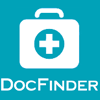The history of the Wunschbaby Institute Feichtinger
The origins of the Wunschbaby Institute Feichtinger dates back to the 1980s, around the time that Prof. Wilfried Feichtinger began his research about the topic of fertility treatment at the Vienna General Hospital. In 1982, the Vienna General celebrated the birth of Austria’s first “test-tube” baby—which counted as one of the first babies in the entire world to be born through assisted reproduction.
The Wunschbaby Institute was founded in 1983. Since then, we’ve been considered pioneers and one of the leading fertility clinics worldwide. More than 10,000 babies have been born thanks to our assistance.
1982
Birth of the first IVF-Baby in Austria
1983
Prof. Wilfried Feichtinger, the “medical father” of the first IVF-Baby in Vienna, founds the institute
1984
Development of the ultrasound-guided transvaginal follicular puncture through Prof. Wilfried Feichtinger in cooperation with the Austrian ultrasound company Kretz-Technology
1990
Introduction of laser-assisted hatching and the development of an ideal laser for this method in cooperation with the company LISA-Laser
1993
Introduction of Intracytoplasmic Sperm Injection (ICSI)
1994
Birth of the first child through ICSI treatment and operative obtainment of sperm directly from the testes.
1995
World congress for IVF and assisted reproduction in Vienna with Prof. Wilfried Feichtinger as chair
1999
Settlement into the new institute building on Lainzer Straße 6, 1130 Vienna
2000
Award of the IVF fund contract to the Institute, since then the costs of IVF treatment have been covered to a large extent by the Funds
2002
Renaming of the institute from “ Instituts für Sterilitätsbetreuung“ to “Wunschbaby-Zentrum, Institute für Kinderwunsch“ (Wunschbaby Center)
2005
First successful preimplantation diagnostics at the Wunschbaby Center
2008
Certification according to ISO 9001
2009
Introduction of improved methods for intracytoplasmic injection (ICSI): IMSI
2010
Introduction of improved methods for intracytoplasmic injection (ICSI): PICSI
2011
Implementation of the CGH (Comparative genomic hybridization) as a new method of polar body diagnostics
2015
Worldwide first preimplantation diagnostic performed on a culture medium
Amendment of the Reproductive Medicine Congress Act
First trophectoderm biopsy at the Wunschbaby Institute Feichtinger
Treatment for homosexual couples begins
2017
Opening of KIZ
2018
Enlistment of Priv.-Doz. DDr. Michael Feichtinger at the Wunschbaby Institute Feichtinger The first institute in Austria to implement thrombocyte plasma therapy
First institute in Austria to introduce CHIPSI: microchip technology for sperm selection
30 years of IVF
The first Austrian IVF-baby celebrated his 30th birthday in August. 30 years ago, the birth of the first “test-tube” baby was a sensation – today, IVF treatment is a standard method practiced in reproductive medicine. It’s a blessing for couples experiencing infertility. Univ. Prof. Dr. Wilfried Feichtinger is the “medical father” of the first Austrian IVF-baby and is still a pioneer in the field of fertility treatment through his Wunschbaby Institute WIF.
The desire to have children is a deeply human desire to experience love and meaning. For most couples, having their own child is the culmination and fulfillment of their relationship. Unfortunately, nature doesn’t work at the press of a button: stress, modern life planning with long training periods and degree paths, the never-ending search for the right partner, health parameters... There are countless reasons why women who want to become mothers do not get pregnant.
Prof. Dr. Wilfried Feichtinger, director of the Wunschbaby Institute WIF in Vienna, is a specialist in this field. He’s the “medical father” of the first Austrian baby to be born through IVF. On August 5th, 1982, Zlatan Jovanovic was born in Austria, one of the first babies worldwide and the 6th country in the world after England, Australia, the USA, France, and Germany, to be born through IVF.
How it all began
Back in the 70s, reproductive medicine was still in its “infant” stage, in the truest sense of the word. "The dream of inducing fertilization outside the womb in a test tube existed very early on. For physicians, this new form of fertilization was an extremely exciting field of medical research," recalls Univ. Prof. Dr. Feichtinger. Together with a team of doctors from the Vienna General's gynecological clinic, Univ. Prof. Dr. Feichtinger worked on research regarding the female egg cell. "My colleagues doubted whether IVF would ever work in humans," the physician recalls. "I was always convinced that it would work one day.”
After the first ectopic pregnancy occurred in a patient who received assisted reproductive treatment in England in 1975, skeptics felt that they were being scammed. The birth of Louise Brown, the world’s first IVF-baby, on July 25th, 1978, changed the world of medicine. “I went to the congress in London where the responsible researches Steptoe and Edwards presented their methods, gathered all the information I could and then held my own presentation for my colleagues in Vienna so that I could finally convince them.” Univ. Prof. Dr. Feichtinger explains. A series of experiments and further research followed, together with Univ. Doz. Dr. Peter Kemeter and Univ. Doz. Dr. Peter Kemeter. The innovative trio of gynecologists achieved their first IVF pregnancy already in 1980; unfortunately, the patient lost her baby in the eighth week. Shortly afterward, Jovanka Jovanović became pregnant with Zlatan.
“At the very beginning, it was fascinating to work on a research project where there was still so little experience in the field," recalls Prof. Dr. Feichtinger. "Working on the origins of life still appeals to me today, and I strive to find more and improved ways to help couples." All in all, the fertility expert has played a significant role in the births of an impressive 5,000 to 6,000 IVF babies to this day.
Artificial Conception 2012
A lot has changed in IVF-treatment since then. For both parties—the patient and the doctor— IVF has become far simpler. Back in the day, egg cells were retrieved through laparoscopy. Today, egg cells are removed via an ultrasound-guided technique, thanks to the development of an ultrasound tool developed by Univ. Prof. Dr. Feichtinger. A special laser technique, known as “assisted hatching” makes the implantation of the embryo even easier: “Roughly 5 days after fertilization, the embryo has to “hatch” out of the zona pellucida of the egg cell in order to successfully implant itself in the uterus,” the physician explains. “With assisted hatching, the zona pellucida is thinned using a laser, simplifying the hatching of the embryo out of the zona pellucida”.
Additionally, the preservation methods of previously retrieved egg cells have been optimized: “cryopreservation allows the preservation of egg cells and embryos for later IVF-attempts, without the necessity of performing another hormonal stimulation before a new attempt,” the physician explains. “Today, it’s even possible to accurately assess the level of maturity of follicles using 3D-ultrasound.” There have also been developments in treatment methods for male patients presenting with a poor sperm analysis: “If gaining sperm from the ejaculate proves impossible, then the tissue can directly be removed from the testes through a testicular puncture,” Univ. Prof. Dr. Feichtinger explains. “This method is called TESE—Testicular Sperm Extraction”
The PICSI-technique is a biological, “close to nature” method used in sperm selection. In PICSI, a single sperm is selected—not according to its morphological presentation—but rather according to its biochemical superficial traits. “Through a specific hyaluronic biding test, mature sperm can be selected prior to fertilization,” Univ. Prof. Dr. Feichtinger says. “mature sperm have a specific receptor for hyaluronic acid on their heads. Several studies have shown that sperm that can successfully bind to hyaluronic acid (thanks to this receptor) are 99.9% free of DNA-damage.” The decided “winner sperm” is then subsequently injected directly into the egg cell. Together, all of these medical innovations provide a notable amount of relief in couples hoping to have children.
The future of reproductive medicine
“In terms of research, we are at the forefront,” the fertility expert emphasizes. There is a lot of interest especially focused on the field of preimplantation diagnostics: “Nowadays, it is possible to diagnose certain genetic defects in unfertilized oocytes—meaning that it is possible to select oocytes for subsequent fertilization in IVF treatment that do not show signs of genetic abnormalities, ensuring the selection of eggs with the highest chance of developing properly,” the physician explains. “This allows for a significant decrease in the number of miscarriages as well as a reduced psychological burden for women.”
The most exciting future aspect is the development of Egg Banks, and generally everything that contributes to fulfilling your wish to have children. The best way to ensure fertility would be to maintain the egg cell quality that women have in their youth or to improve the quality of egg cells at a later age.
There is also a need for the development of methods to cultivate gametes in the absence of sperm cells. “In research groups, this is referred to as haploidization,” Univ. Prof. Dr. Feichtinger explains. “This method allows the formation of gametes from normal body cells.” This would be extremely helpful for couples where the male patients cannot produce sperm, or the female patient cannot produce egg cells. Nevertheless, it would allow the birth of a baby containing the genes from both the mom and the dad.
“My vision is, and has always been, to help every single couple that wants to have their own baby,” Univ. Prof. Dr. Feichtinger expresses.































